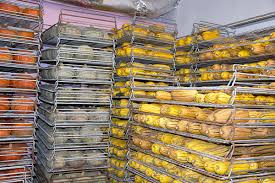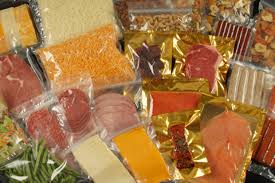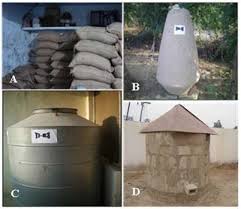Proper agricultural storage methods are essential for maintaining the quality and safety of crops after harvest. Effective storage can help reduce spoilage, preserve nutritional value, and ensure a steady supply of food throughout the year.
With the right techniques, farmers and producers can extend the shelf life of their products and minimize waste, contributing to food security and economic stability.
Importance of Proper Storage for Agricultural Products
Proper storage of agricultural products is vital for several reasons:
1. Reduces Spoilage: Effective storage methods help to minimize spoilage caused by pests, diseases, and environmental factors, ensuring that more of the harvest remains usable.
2. Maintains Quality: Proper storage techniques preserve the nutritional quality, flavor, and texture of crops, making them more appealing to consumers.
3. Extends Shelf Life: By using appropriate storage methods, farmers can extend the shelf life of their products, allowing them to sell goods over a more extended period without compromising quality.
4. Supports Market Availability: Adequate storage allows farmers to store products during peak harvest seasons and sell them during off-seasons, stabilizing market prices and ensuring consistent supply.
5. Enhances Food Security: Efficient storage practices contribute to food security by reducing food loss and ensuring a reliable food supply for communities.
Types of Storage Methods

There are several storage methods used in agriculture, each with its advantages and suitable applications. Here are some of the main types:
1. Refrigerated Storage: This method involves storing perishable items in a controlled, cool environment to slow down the decay process.
i. Temperature Control: Maintaining temperatures between 32°F and 40°F (0°C to 4°C) is essential for fruits, vegetables, dairy, and meats.
ii. Humidity Control: Proper humidity levels are crucial to prevent dehydration or excess moisture that can lead to spoilage.
2. Controlled Atmosphere Storage: This method regulates the levels of oxygen, carbon dioxide, and humidity to extend the storage life of fresh produce.
i. Gas Composition Control: Reducing oxygen levels and increasing carbon dioxide can slow ripening and decay in fruits and vegetables.
ii. Temperature Management: Like refrigerated storage, maintaining specific temperature ranges is crucial for this method.
3. Bulk Storage Systems: Bulk storage involves storing large quantities of crops, such as grains, in silos or warehouses.
i. Silos: Silos are tall, cylindrical structures that protect grains from pests, moisture, and environmental factors while allowing for easy loading and unloading.
ii. Warehouses: Larger storage facilities that can house various types of agricultural products, including fruits and vegetables.
Refrigerated Storage
Refrigerated storage is essential for maintaining the quality and safety of perishable agricultural products.
1. Equipment Requirements: Proper refrigeration units should be chosen based on the types of products being stored and the required temperature range.
2. Regular Monitoring: It is essential to regularly check temperatures and humidity levels to ensure they remain within the desired ranges. Automated systems can help provide real-time monitoring.
3. Proper Organization: Storing products in an organized manner allows for efficient use of space and quick access to items, minimizing the time the refrigerator door is open.
Read Also: Importance of a Sick Bay in a Ruminant House
Controlled Atmosphere Storage

Controlled atmosphere storage is a sophisticated method that can significantly prolong the shelf life of fresh produce.
1. Initial Setup: This system requires careful planning and installation of gas composition monitoring equipment to maintain the desired levels of oxygen and carbon dioxide.
2. Regular Maintenance: Regular checks and adjustments are necessary to ensure that gas levels remain stable and that temperature and humidity are appropriately managed.
3. Monitoring Systems: Utilizing advanced monitoring systems can help detect any deviations from optimal storage conditions, allowing for quick corrective actions.
Bulk Storage Systems
Bulk storage systems are designed to store large quantities of grains and other products efficiently.
1. Silo Maintenance: Regular inspection and maintenance of silos are essential to prevent pest infestations, moisture accumulation, and structural issues.
2. Aeration: Proper aeration systems in silos help control temperature and moisture levels, preventing spoilage and maintaining grain quality.
3. Loading and Unloading: Efficient loading and unloading procedures are crucial for bulk storage. Automated systems can enhance the speed and efficiency of these processes.
Cold Storage Techniques
Cold storage is an essential method for preserving perishable agricultural products. It involves maintaining a controlled temperature environment to slow down the spoilage process of fruits, vegetables, dairy, and meats. Here are some effective cold storage techniques:
1. Refrigeration: This technique uses mechanical refrigeration units to maintain low temperatures.
i. Ideal Temperature Range: Generally, a temperature range of 32°F to 40°F (0°C to 4°C) is suitable for most perishable items.
ii. Regular Monitoring: Use thermometers and automated systems to ensure temperatures are consistent.
2. Freezing: Freezing is a more extreme cold storage method that stops microbial growth and enzymatic reactions.
i. Quick Freezing: Rapidly freezing products reduces the size of ice crystals, which helps maintain the texture of food.
ii. Storage Temperature: Maintain a temperature of 0°F (-18°C) or lower for optimal results.
3. Blast Freezing: This is a quick freezing method that uses very low temperatures and high air circulation to freeze food quickly.
i. Speed: Foods can be frozen in minutes, which helps preserve quality.
ii. Use in Commercial Operations: This method is commonly used in commercial settings where large volumes of food need to be frozen rapidly.
4. Cryogenic Freezing: This advanced technique uses liquid nitrogen or carbon dioxide to freeze food items.
i. Fast and Efficient: It quickly lowers the temperature of the product, preserving flavor and texture.
ii. Use in High-Volume Production: Often used in industries with high production rates.
Read Also: Stocking Management for Ruminant Animals
Packaging and Preservation Methods

Proper packaging is crucial for extending the shelf life of agricultural products. Here are some effective packaging and preservation methods:
1. Vacuum Packaging: This method removes air from packaging before sealing.
i. Benefits: Reduces oxidation, prevents spoilage, and can extend shelf life by 3-5 times.
ii. Suitable For: Meats, cheeses, and certain vegetables.
2. Modified Atmosphere Packaging (MAP): This technique replaces the air inside packaging with a specific mixture of gases, such as carbon dioxide and nitrogen.
i. Benefits: Slows down ripening and decay while maintaining freshness.
ii. Common Use: Widely used for fresh fruits and vegetables.
3. Edible Coatings: Applying edible coatings to fruits and vegetables can help retain moisture and reduce spoilage.
i. Materials Used: Coatings are often made from natural materials like waxes or proteins.
ii. Advantages: They are safe for consumption and can enhance the appearance of produce.
4. Canning: This method involves sealing food in airtight containers and heating them to kill bacteria.
i. Long Shelf Life: Canned foods can last for years if stored correctly.
ii. Commonly Used For: Fruits, vegetables, sauces, and meats.
Factors Affecting Storage Choice
When choosing storage methods for agricultural products, several factors should be considered:
1. Type of Product: Different products require different storage conditions. For example, root vegetables may need a humid environment, while meats require colder temperatures.
2. Duration of Storage: The length of time products will be stored influences the choice of method. Short-term storage may only need refrigeration, while long-term storage might require freezing or canning.
3. Cost and Availability: Budget constraints and the availability of storage facilities can impact storage choices. Investing in more advanced systems may not be feasible for all producers.
4. Market Demand: Understanding consumer demand can help determine the best storage method. Products with higher demand may require quicker turnaround times, influencing storage decisions.
Best Practices for Effective Storage
Implementing best practices for effective storage can significantly enhance the quality and longevity of agricultural products:
1. Regular Inspection: Regularly check storage conditions, including temperature, humidity, and ventilation, to ensure they remain within the optimal ranges.
2. Proper Organization: Store products in an organized manner, allowing for easy access and rotation. This helps ensure that older products are used first, reducing waste.
3. Hygiene and Sanitation: Maintain cleanliness in storage areas to prevent contamination. Regular cleaning and sanitizing should be part of the routine.
4. Staff Training: Ensure that staff are trained in proper storage techniques, including monitoring conditions and handling products.
5. Documentation: Keep accurate records of storage conditions, inspections, and inventory to help identify any issues and track product movement.
By utilizing effective cold storage techniques, appropriate packaging methods, and following best practices, farmers and producers can optimize the storage of their agricultural products.
This will lead to reduced spoilage, extended shelf life, and better quality food for consumers.
Read Also: The Impact of Inefficient Waste Management on Oceans

